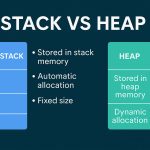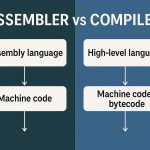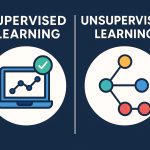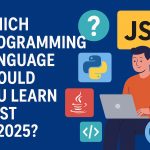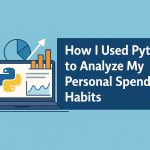Description
Python is a high-level, general-purpose programming language known for its readability, simplicity, and versatility. Created by Guido van Rossum and first released in 1991, Python was designed to be an approachable language with a clear and expressive syntax that resembles natural English. Over the decades, it has grown into one of the most widely used programming languages in the world, powering domains from web development and automation to artificial intelligence and scientific computing.
Python’s philosophy emphasizes code readability, developer productivity, and ease of learning, making it a popular first language for beginners and a powerful tool for professionals.
Key Features
- Dynamically typed: No need to declare variable types explicitly.
- Interpreted: Executes code line-by-line using the Python interpreter.
- Object-oriented: Supports classes and inheritance.
- High-level abstraction: Simplifies complex tasks.
- Extensive standard library: Batteries included philosophy.
- Cross-platform: Works on Windows, macOS, Linux, and more.
- Massive ecosystem: Third-party libraries for nearly every use case.
Design Philosophy: The Zen of Python
import thishis built-in Easter egg prints the Zen of Python — a collection of aphorisms that summarize the design principles behind the language. A few highlights include:
- “Beautiful is better than ugly.”
- “Simple is better than complex.”
- “Readability counts.”
- “There should be one– and preferably only one –obvious way to do it.”
Hello, World! in Python
print("Hello, World!")No boilerplate, no class declaration, no compilation step — just a simple, readable line of code.
Common Use Cases
1. Web Development
Frameworks like Django and Flask make it easy to build robust web applications.
2. Data Science and Machine Learning
Python dominates this space thanks to powerful libraries like:
- NumPy: numerical computing
- Pandas: data analysis
- Matplotlib / Seaborn: visualization
- Scikit-learn: machine learning
- TensorFlow / PyTorch: deep learning
3. Automation and Scripting
Python is often used to write scripts for automating repetitive tasks, such as renaming files, scraping websites, or processing logs.
4. DevOps and System Administration
Python scripts power CI/CD pipelines, cloud deployments, and infrastructure tools (e.g., Ansible).
5. Desktop Applications
GUI frameworks like Tkinter, PyQt, and Kivy enable building native apps.
6. Game Development
Libraries like Pygame help build simple 2D games.
Python Syntax and Language Design
Python’s syntax is minimal and encourages best practices.
Variables and Types
name = "Alice"
age = 30
height = 5.9
is_active = TrueConditionals
if age > 18:
print("Adult")
else:
print("Minor")Loops
for i in range(5):
print(i)Functions
def greet(name):
return f"Hello, {name}"Classes
class Animal:
def __init__(self, name):
self.name = name
def speak(self):
return f"{self.name} makes a sound"Interpreter and Virtual Environments
Python runs through an interpreter, typically accessed via the command line:
python script.pyYou can manage multiple Python environments using:
- venv (built-in)
- virtualenv
- Conda
These tools isolate dependencies per project, preventing conflicts.
Python 2 vs Python 3
Python 3, released in 2008, introduced backward-incompatible changes that modernized the language. Key differences:
| Feature | Python 2 | Python 3 |
|---|---|---|
| Print syntax | print "Hello" | print("Hello") |
| Integer division | 5 / 2 = 2 | 5 / 2 = 2.5 |
| Unicode default | No | Yes |
| Official support | Ended in 2020 | Actively maintained |
Python 3 is now the standard, and all modern libraries target it.
Popular Libraries and Frameworks
| Domain | Libraries/Frameworks |
|---|---|
| Web Development | Flask, Django, FastAPI |
| Data Analysis | Pandas, NumPy |
| Visualization | Matplotlib, Seaborn, Plotly |
| Machine Learning | Scikit-learn, TensorFlow, PyTorch |
| Automation | Selenium, Requests, BeautifulSoup |
| API Development | FastAPI, Flask-RESTful |
| Testing | Pytest, unittest |
| Game Development | Pygame |
Strengths
- Extremely easy to read and write
- Massive ecosystem with libraries for nearly everything
- Strong community support
- Great documentation
- Excellent for rapid prototyping
- Cross-platform and embeddable
Weaknesses
- Performance: Slower than compiled languages like C++ or Go
- Threading Limitations: Due to the Global Interpreter Lock (GIL)
- Mobile App Development: Less mature compared to other languages
- Binary Size: Not ideal for constrained embedded environments
Python in Industry
Python is used extensively in both startups and large enterprises:
- Google: Backend tools, automation
- Netflix: Data science, monitoring, recommendation systems
- Instagram: Backend built using Django
- NASA: Scientific computing and scripting
- Reddit: Entirely written in Python initially
Real-World Analogy
Think of Python as the Swiss Army Knife of programming languages:
- It may not be the sharpest tool for every job.
- But it’s easy to learn, highly flexible, and handles most use cases well.
- It’s especially great when speed of development matters more than execution speed.
Python vs Other Languages
| Feature | Python | Java | C++ | JavaScript |
|---|---|---|---|---|
| Typing | Dynamic | Static | Static | Dynamic |
| Execution Model | Interpreted | Compiled (JVM) | Compiled | Interpreted |
| Syntax Simplicity | High | Moderate | Complex | Moderate |
| Use in ML/AI | Dominant | Rare | Rare | Rare |
| Web Development | Server-side | Backend-heavy | Limited | Front + Back |
Community and Ecosystem
- PyPI: Python Package Index, a repository of over 500,000 packages
- Conferences: PyCon, SciPy, EuroPython
- PEP: Python Enhancement Proposals (e.g., PEP 8 for style guide)
- Jupyter Notebooks: Interactive development tool for data science
Future of Python
Python continues to evolve, with major developments like:
- Pattern Matching (PEP 634)
- Faster Interpreters (e.g., Python 3.12 performance improvements)
- Better typing with
mypyandpyright - MicroPython and CircuitPython expanding Python into embedded systems
Related Terms
- Interpreter
- Django
- PEP (Python Enhancement Proposal)
- Bytecode
- Jupyter Notebook
- GIL (Global Interpreter Lock)
- PyPI
- Module
- Package
- Decorator
- List Comprehension
- Lambda Function
- Virtual Environment
- REPL (Read–Eval–Print Loop)



